After announcing the OnePlus 8 family a couple of weeks ago, the company released the two handsets this week. While we reviewed the OnePlus 8 Pro flagship last week, it's now time to turn our attention to its non-Pro sibling, the OnePlus 8.
While the Pro is only available unlocked from OnePlus and Amazon, the OnePlus 8 is the one that you'll actually be able to get from carriers, including T-Mobile and Verizon. And since the OnePlus 8 5G UW is sold on Verizon, that makes it the only model that supports both sub6 and mmWave 5G.
Starting at $699, this is definitely the more mainstream version of the OnePlus 8 series, missing out on things like wireless charging and a 120Hz refresh rate on the display. It's still pretty awesome though, with a 90Hz OLED screen, and a particularly sexy Interstellar Glow color.
Specs
| CPU | Snapdragon 865 |
|---|---|
| GPU | Adreno 650 |
| Display | 6.55 inches, 1080x2400, 402ppi, Fluid AMOLED, 20:9, 90Hz |
| Body | 160.2x72.9x8mm, 180g |
| Camera | 48MP f/1.75 w/ OIS, 16MP f/2.2 ultra-wide, 2MP f/2.4 macro, Front - 16MP f/2.45 |
| Video capture | 4K - 60fps, Front - 1080p - 30fps |
| RAM | 8GB/12GB LPDDR4X |
| Storage | 128GB/256GB UFS 3.0 2-LANE |
| Battery | 4,300mAh, Warp Charge 30T |
| Colors | Glacial Green (unlocked), Onyx Black (unlocked, Verizon, T-Mobile), Interstellar Glow (unlocked, T-Mobile), Polar Silver (Verizon) |
| Price | $699/$799 |
Pricing is $699 for the model with 8GB RAM and 128GB storage, or $799 for 12GB RAM and 256GB storage. The Verizon variant is a bit more expensive at $799 for the 128GB model, but that's also for better 5G support.
Day one
Design
As far as design goes, the OnePlus 8 is superior to the Pro, at least in my opinion. Right out of the gate, let's start with the color. The OnePlus 8 comes in a color called Interstellar Pro, and it's gorgeous. As I remarked in my review of the Pro, I can't believe they reserved it for the non-Pro. Interstellar Glow is the clear winner of the color selection.
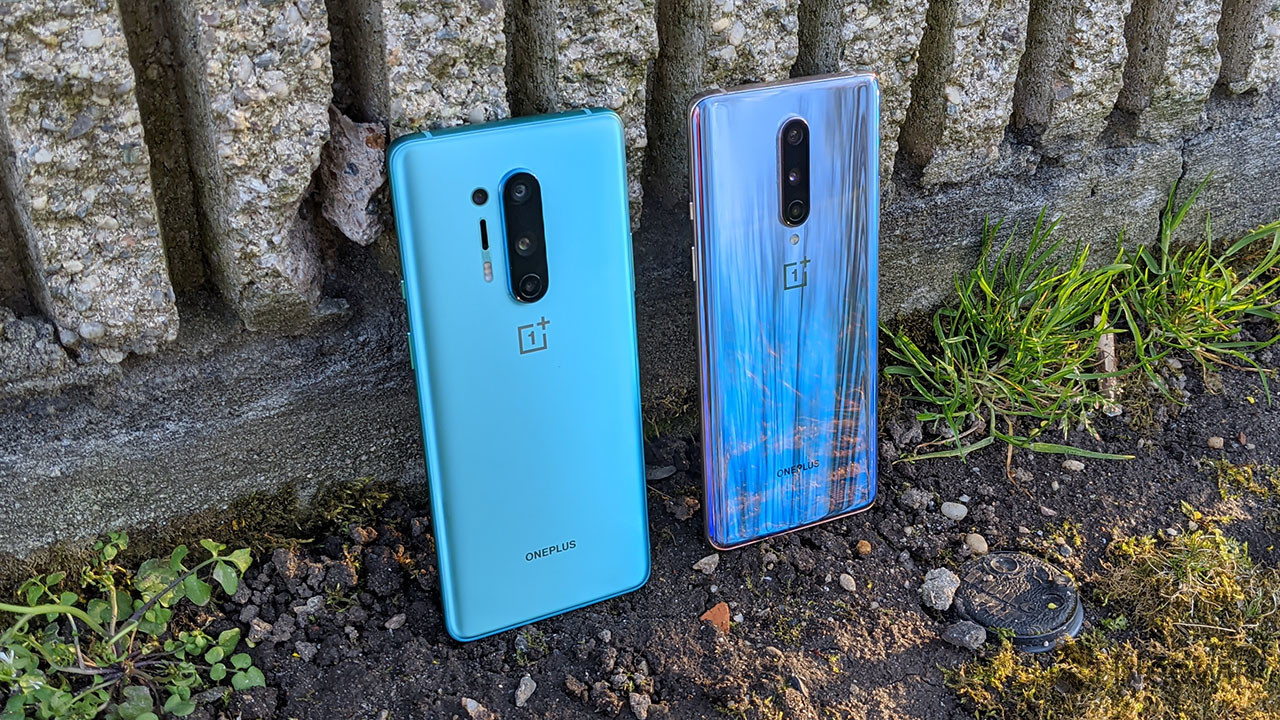
Note that if you love the Glacial Green that the Pro does come in, you can get that too. Interstellar Glow is a mirrored color that has a rainbow-colored gradient, which changes based on how the light is reflected off of it. Even the reflections look beautiful.
Yes, it is a fingerprint magnet, and no, the matte Glacial Green is not. That's a matter of preference, whether you want the prettier one or if you want the one that's easier to maintain. You might end up using a case too, such as the new Glacial Green Sandstone case that OnePlus is offering.

It's not just the color that makes me like the design better though. The camera bump is much smaller. If you're not using a case on the Pro, it sticks out like a sore thumb. On the OnePlus 8, the camera bump is a little bit more subtle. Also, the handset as a whole has a slightly smaller footprint, making it easier to hold.
It's also thinner and 19g lighter. Actual usability is something that I feel like we don't talk about as much as we should. Sometimes we look for power, camera performance, sexy displays, and battery life without taking a look at what that does to the overall form factor. It's worth talking about now because with the OnePlus 8, it might actually be a proper balance.

On the bottom of the aluminum frame, there's a USB Type-C port for charging, a speaker grille, and a dual nano-SIM slot. The unit that I have is unlocked, so I can't confirm that the carrier models are dual-SIM, although they're almost certainly not.

On the right side of the device, there's a power button and a switch to turn notification sounds on or off. There are three settings: on, vibrate, and silent. It's a nice and easy way to adjust this, something that OnePlus has been doing for years now. Outside of the Android world, I've only ever seen this feature from Apple, and I wish more OEMs did it.

Finally, the volume rocker is on the left side of the device. Not much to talk about there.
90Hz Fluid AMOLED display
OnePlus used a 6.55-inch 90Hz FHD OLED display, as opposed to the 6.78-inch 120Hz QHD OLED screen that's found in the Pro. There's some good and some bad here.

The good is that I don't think that there's a noticeable difference between 90Hz and 120Hz, or between FHD and QHD. For years, we've been used to 60Hz screens, and the smooth animations on higher refresh rates make for a pleasant experience, but I really think 90Hz is fine. OnePlus is actually the first to popularize the feature too with last year's OnePlus 7 Pro. And like I said, I don't think anyone can really tell the difference between FHD and QHD on a screen this small.
OnePlus brought the 90Hz refresh rate to the non-Pro lineup with the 7T, but that screen was flat. Now, the edges are curved, so if you're a fan of flat screens, as many people seem to be these days, you're out of luck.
The screen is beautiful, just like the one on the Pro. It has vibrant colors, true blacks, and smooth animations. The bad is just that it seems to be a bit buggy. If you turn on Night Mode, there are some real scrolling issues. Text is impossible to read, icons look distorted when scrolling through the app drawer, and more. This even happens when scrolling slowly.
It really takes away from the smooth scrolling and animations that I expect from a 90Hz display, and from what actually does happen when Night Mode is off.

There's also no always-on display, which is a real shame. If you raise the phone, you'll see a UI like the one above, which means that you don't have to press the power button to use the in-display fingerprint sensor. OnePlus is adding an AoD though; it just hasn't said when.
I want to reiterate that it has an in-display fingerprint sensor, one of the fastest and most accurate on the market. This is important because premium smartphones from Apple and Google only have facial recognition, which is unusable these days if you have to wear a mask all the time.
Zen Mode
Like the switch to control notification sounds, Zen Mode is another unique feature that OnePlus offers. It debuted with last year's OnePlus 7 Pro, and what it does is it simply keeps you from using your phone. Last year, you could set it to work for 20 minutes, but you can now set it to 20, 30, 40, or 60 minutes.
All you can do while in Zen Mode is make emergency calls, receive calls, and access the camera. Notifications are muted, but you'll still get them if you're wearing a smartwatch, oddly enough.
Once you're in Zen Mode, there's no way out besides riding out the clock. Even if you restart the phone, that won't help.
Camera
The OnePlus 8 has a triple-lens camera system, but it's inferior to the OnePlus 8 Pro. The main sensor is a 48MP Sony IMX586, and while it has the same f/1.75 aperture, the sensor is smaller. That means that low-light performance isn't quite on par with the Pro. There's also no telephoto lens, including a 2MP macro lens instead. And finally, there's a 16MP ultra-wide sensor.
The main sensor does support 4K video capture at 60fps, but there's no 8K video recording like we've seen on various Snapdragon 865 devices so far this year. It's likely because OnePlus wanted to use quad pixel binning for better low light performance. The front camera is still limited to 1080p at 30fps.
The camera does promise 2x lossless zoom, even though there's no 2x zoom lens. That's just generally what you get from such a high-resolution sensor.
There's actually a lot that I like about this camera, considering the specs and what it's lacking when compared to the Pro. Low-light performance is OK, but Nightscape mode gets the job done. As was also my complaint with the OnePlus 8 Pro, low-light performance with the ultra-wide camera is terrible, and you can't compensate for it with Nightscape because the feature only works with the main sensor.
OnePlus also likes to release software updates to improve the product over time. We've already seen numerous camera improvements via updates, such as better focusing in low-light conditions.
Performance and battery life
As always, performance is solid. The OnePlus 8 includes the best Android chipset on the market, the Snapdragon 865, along with up to 12GB RAM and up to 256GB UFS 3.0 storage. OnePlus had actually sent me the 8GB RAM OnePlus 8 Pro, but the 12GB RAM OnePlus 8, so this thing felt blazingly fast at all times.

It also includes a Snapdragon X55 modem for 5G connectivity, although most models only support sub6 5G. To be completely honest, you won't notice a massive difference between this and 4G right now, but it should get better over time. T-Mobile is the biggest name in this arena right now, since it actually has a nationwide sub6 network.
Verizon is more focused on mmWave, although it does have sub6 coming later on this year. The problem with millimeter wave 5G is that it only works in line of sight with a base station. You'll only ever get it outdoors, and it won't even work while it's in your pocket. Real 5G is going to be a combination of sub6 and mmWave, and the only variant of the OnePlus 8 that actually supports that is the Verizon model.
Battery life is pretty good, getting through the day without issue under moderate usage. Obviously, it goes down if you use it a lot, and what I mean if that if you play games on your phone for a couple of hours on end, you'll have to charge it before the end of the day.
Warp Charge 30T is awesome. A half-hour charge will keep you going for a while. The real shame is that there's no wireless charging. Even if it didn't have the magnificent 30W wireless charging that's available on the Pro, I'd take 10W Qi charging just to keep it on the wireless charging pad on my desk all day.
For benchmarks, I used Geekbench 5, AnTuTu, and GFXBench. First up is Geekbench 5, which tests the CPU.

This isn't the first Snapdragon 865 device of the year, so I won't dwell on these scores that are nearly identical as the ones I got on the OnePlus 8 Pro, Galaxy S20+ 5G, LG V60 ThinQ 5G, and more. Next up is AnTuTu, which tests everything.

The overall score is similar to the 576,696 one I got on the OnePlus 8 Pro, but the Pro did a lot better in the UX (particularly User Experience) section, and it was made up for in the memory section. I wonder if the 12GB RAM Pro would have had a better score here. Anyway, next up is GFXBench, which tests the CPU.

Conclusion
I believe that the OnePlus 8 series includes two phones that are the best on the market right now. Apple's iPhones and Google's Pixels are non-starters without a fingerprint sensor, and I really couldn't stand Samsung's software or camera on the Galaxy S20+. Motorola's Edge+ is a great all-around package, but it's a Verizon exclusive.

If you ask me, the real decision is between the OnePlus 8 and the OnePlus 8 Pro. The Pro costs $200 more for similar specs. It's $699 and $799 for 8GB/128GB and 12GB/256GB on the OnePlus 8, respectively, and $899 and $999 for the OnePlus 8 Pro. What you get for that extra $200 is 30W wireless charging (10W if it's not OnePlus's own charger), a better camera with a telephoto lens, and a 120Hz display.
Whether those extra specs are worth it is up to you, but I really like the OnePlus 8. In fact, I almost like it more regardless of the price. It's thinner, lighter, and it has a smaller footprint. It's prettier with its Interstellar Glow color, and it has a smaller camera bump.
Honestly, if you go for either option, I don't think you'll regret it If you want to check out the OnePlus 8, you can find it on Amazon here or OnePlus.com here.

















































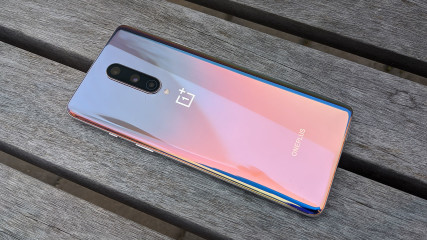
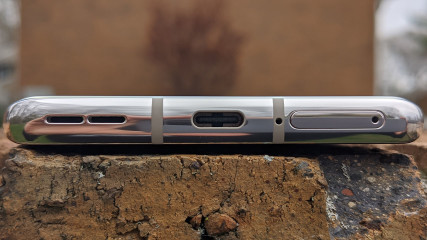
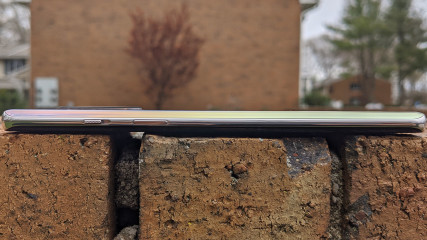
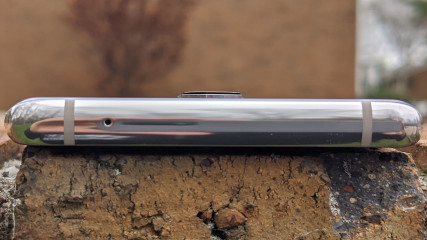
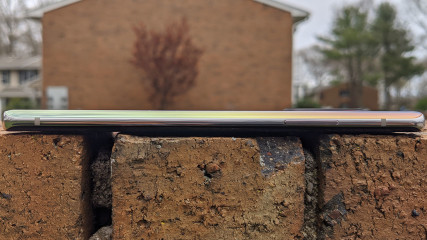
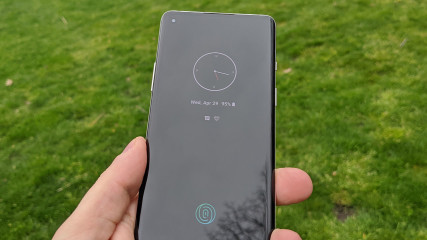
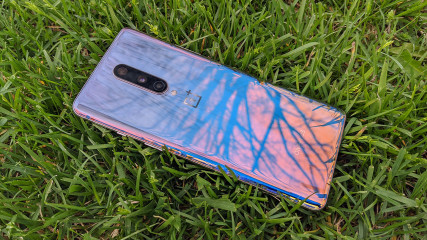
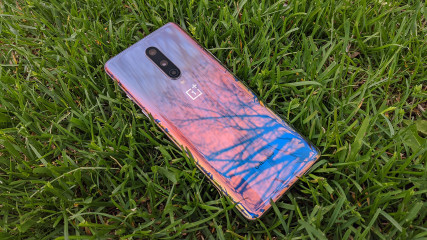
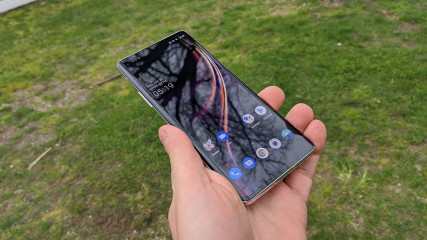
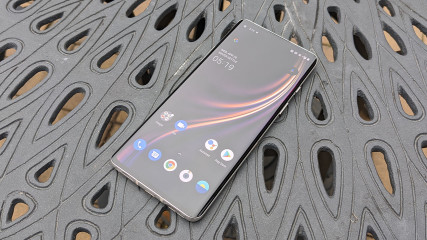
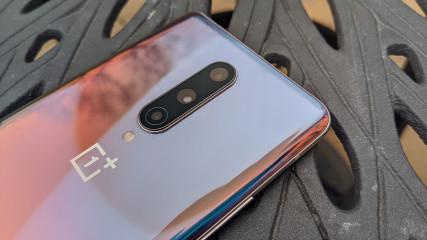
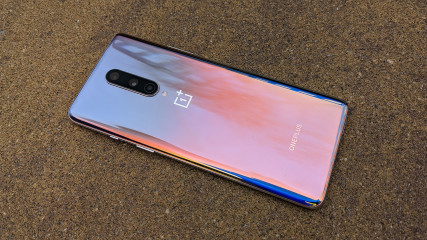
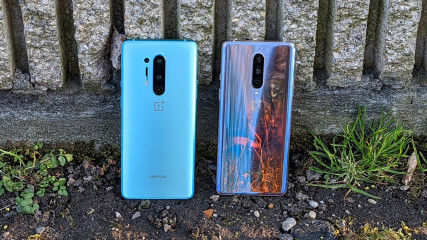
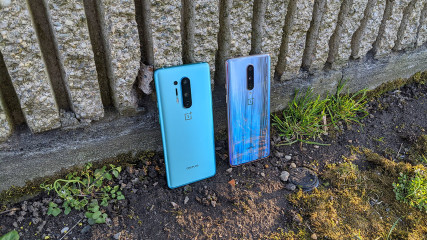
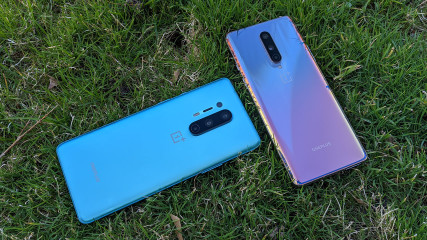
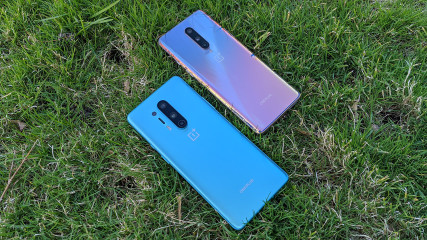
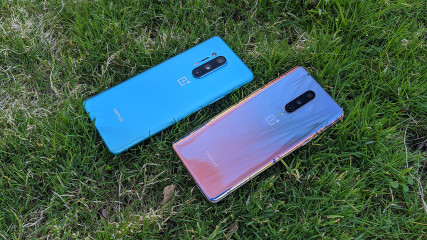
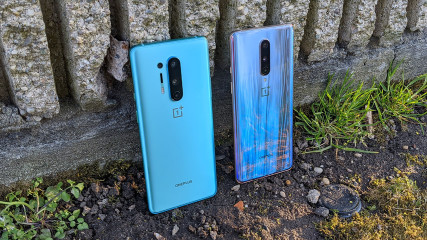









11 Comments - Add comment